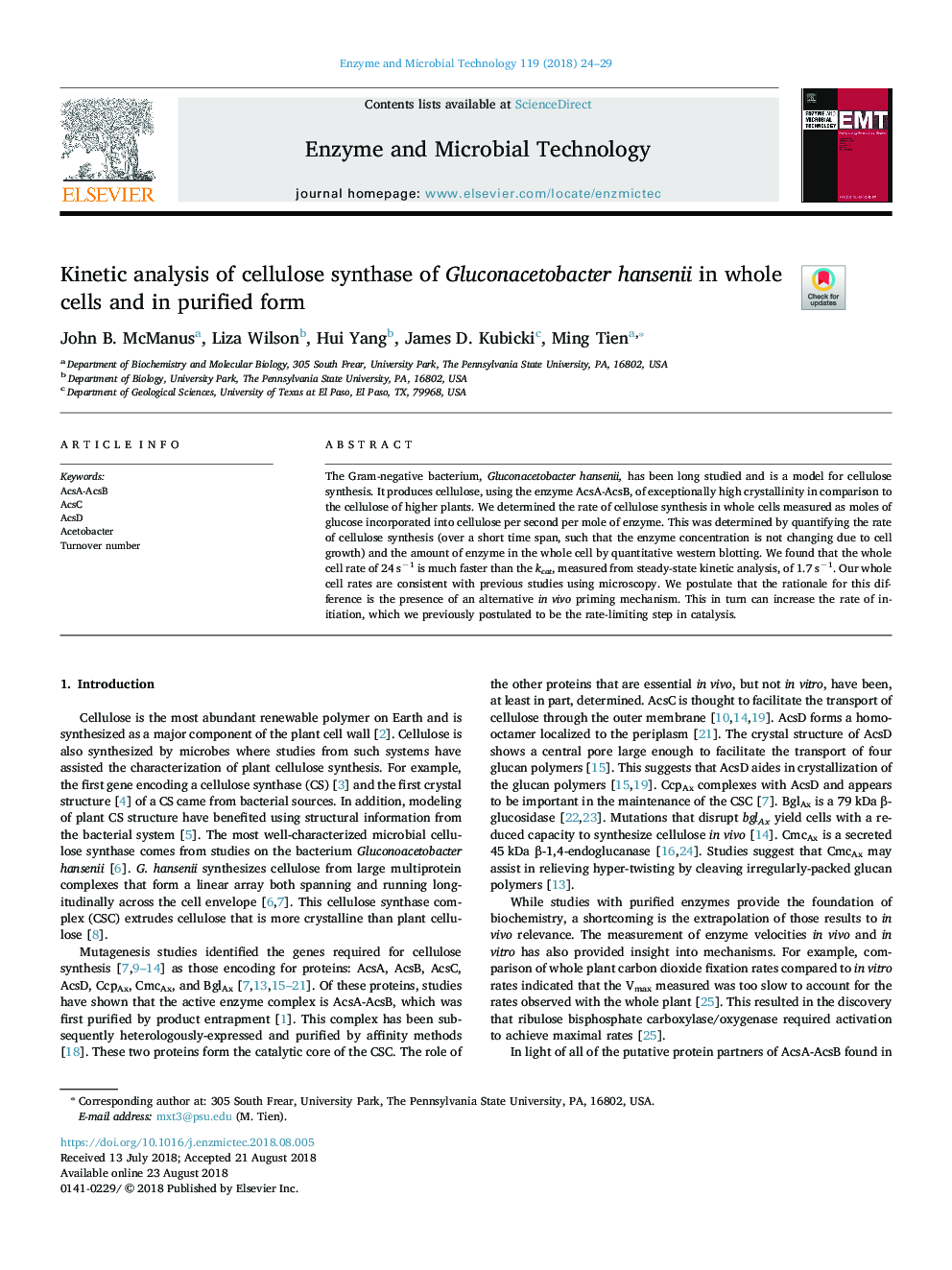| Article ID | Journal | Published Year | Pages | File Type |
|---|---|---|---|---|
| 10126741 | Enzyme and Microbial Technology | 2018 | 6 Pages |
Abstract
The Gram-negative bacterium, Gluconacetobacter hansenii, has been long studied and is a model for cellulose synthesis. It produces cellulose, using the enzyme AcsA-AcsB, of exceptionally high crystallinity in comparison to the cellulose of higher plants. We determined the rate of cellulose synthesis in whole cells measured as moles of glucose incorporated into cellulose per second per mole of enzyme. This was determined by quantifying the rate of cellulose synthesis (over a short time span, such that the enzyme concentration is not changing due to cell growth) and the amount of enzyme in the whole cell by quantitative western blotting. We found that the whole cell rate of 24âsâ1 is much faster than the kcat, measured from steady-state kinetic analysis, of 1.7âsâ1. Our whole cell rates are consistent with previous studies using microscopy. We postulate that the rationale for this difference is the presence of an alternative in vivo priming mechanism. This in turn can increase the rate of initiation, which we previously postulated to be the rate-limiting step in catalysis.
Keywords
Related Topics
Physical Sciences and Engineering
Chemical Engineering
Bioengineering
Authors
John B. McManus, Liza Wilson, Hui Yang, James D. Kubicki, Ming Tien,
